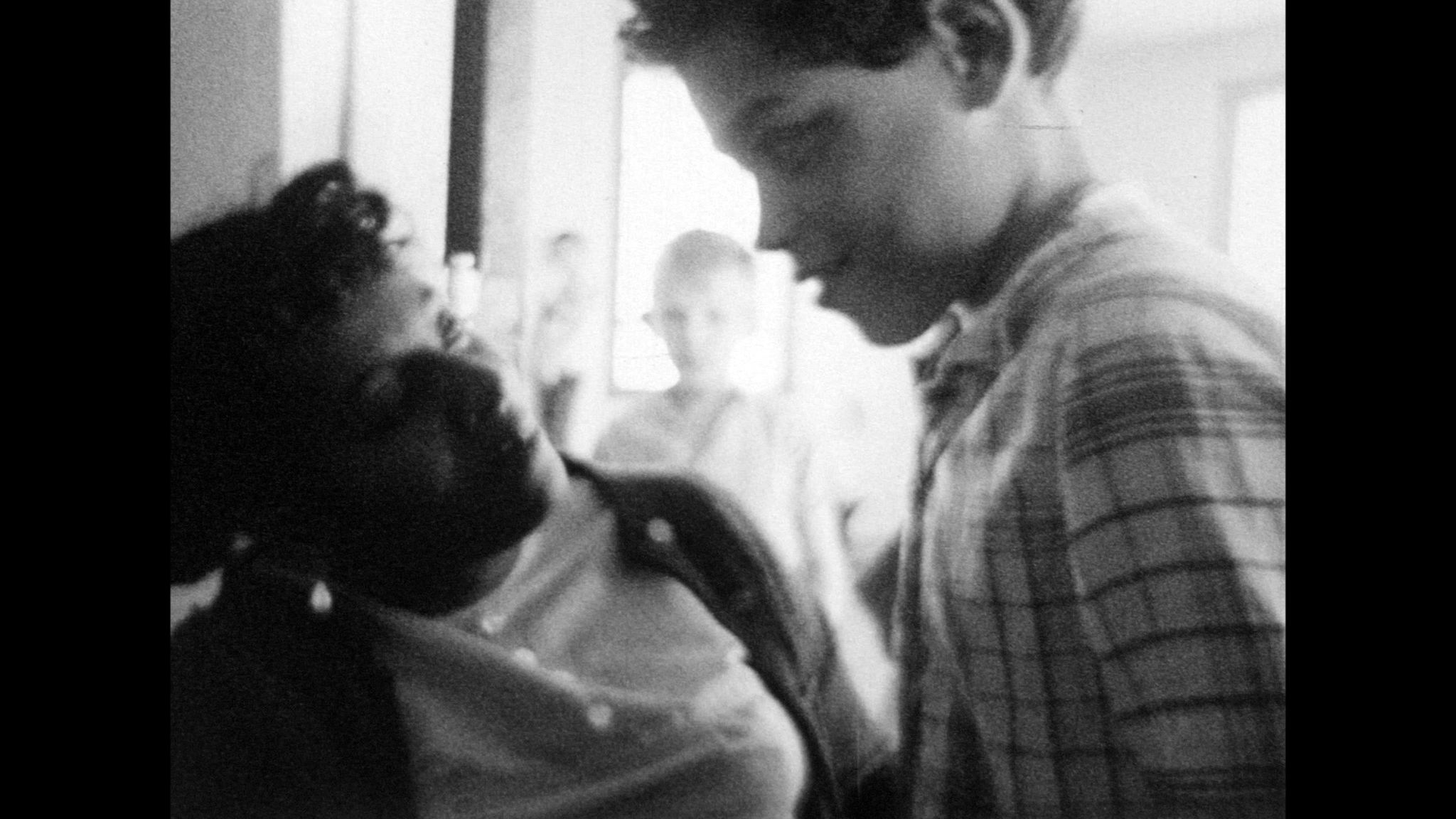
(Dasfilter.com, August 12, 2016)
…The last movie I saw in Marseille moved me the most. In Mike Hoolboom’s Scrapbook I had time enough to feel what it means to look into a camera, to make a picture, and to produce pictures that think. Formally, this 18-minute film offers a minimum of procedures: black and white 16mm film material, intertitles explaining the origins of the pictures, an abstract sound score and accompanying voice-over. The way these elements are arranged, their relationships with each other, what and how they signify is immensely impressive. The film allows us access to a world that is otherwise closed. Even days after the festival the film is still alive in memory.
The film material was made by Hoolboom’s friend Jeffrey Paull in 1966, during a film workshop in a facility for autistic children and young people in the USA. The participants took pictures of each other and of themselves, and learned to process film “in order to re-see themselves,” as the voice-over suggests. Many found the experience therapeutic.
One day Paull brought his Bolex movie camera and began shooting what would eventually turn out to be 30 minutes of material. He produced intensely intimate portraits of children and young people. They look into the camera, smile and make faces.
Here the everyday becomes visible again: one caregiver sits with a child on her lap. He rubs cheeks with her on one side, and then another. A child eats a cake and seems blessed. Near the beginning of the film, a girl with glasses smiles into the camera. “Oh, it’s you,” we hear in voice-over. Fifty years after the recordings were made, Hoolboom searched the internet for participants from that time. Donna Washington answered the call and was ready to engage with her past selves. Her responses were recorded, and then edited to create a kind of script that we hear in voice-over, spoken by an actress. Incidentally, this script can be found on the director’s webpage (mikehoolboom.com).
Donna’s words are already poetry. She speaks about the girl wearing glasses that we see early in the movie in a way that challenges classical notions of perception and self-image. The “I” is not a closed shape. The boundaries between self and other (whether another person, or a drape, a bench, sunlight) are fluid and permeable. Environmental impressions are vivid and lively. You could become a colour, subjectivity can be projected as easily into things, contact moments, another’s face. What is sometimes experienced in shamanistic rituals was for some of these young charges, a permanent state. Through their encounters with a camera and their talks with Jeffrey Paull new possibilities emerged. Working with pictures she had made herself, Donna relearns the act of naming, uncovering pictures that she begins to identify as “I.” It is very touching as she says at the end that they have lost the fear of other’s faces since they can also see pieces of themselves in them.
The language is precise and denotative, and at the same time open-ended. Filled with the beauty and humour of truth. This encounter with pictures from another world provokes statements about cinema and what unites us as humans. At the end of course the question remains – how can you see these films? Not likely in movie theatres, which is a shame! They buzz in a festival cosmos, it’s good that places like Marseille still exist. They are hideaways in which film can be reinvented.